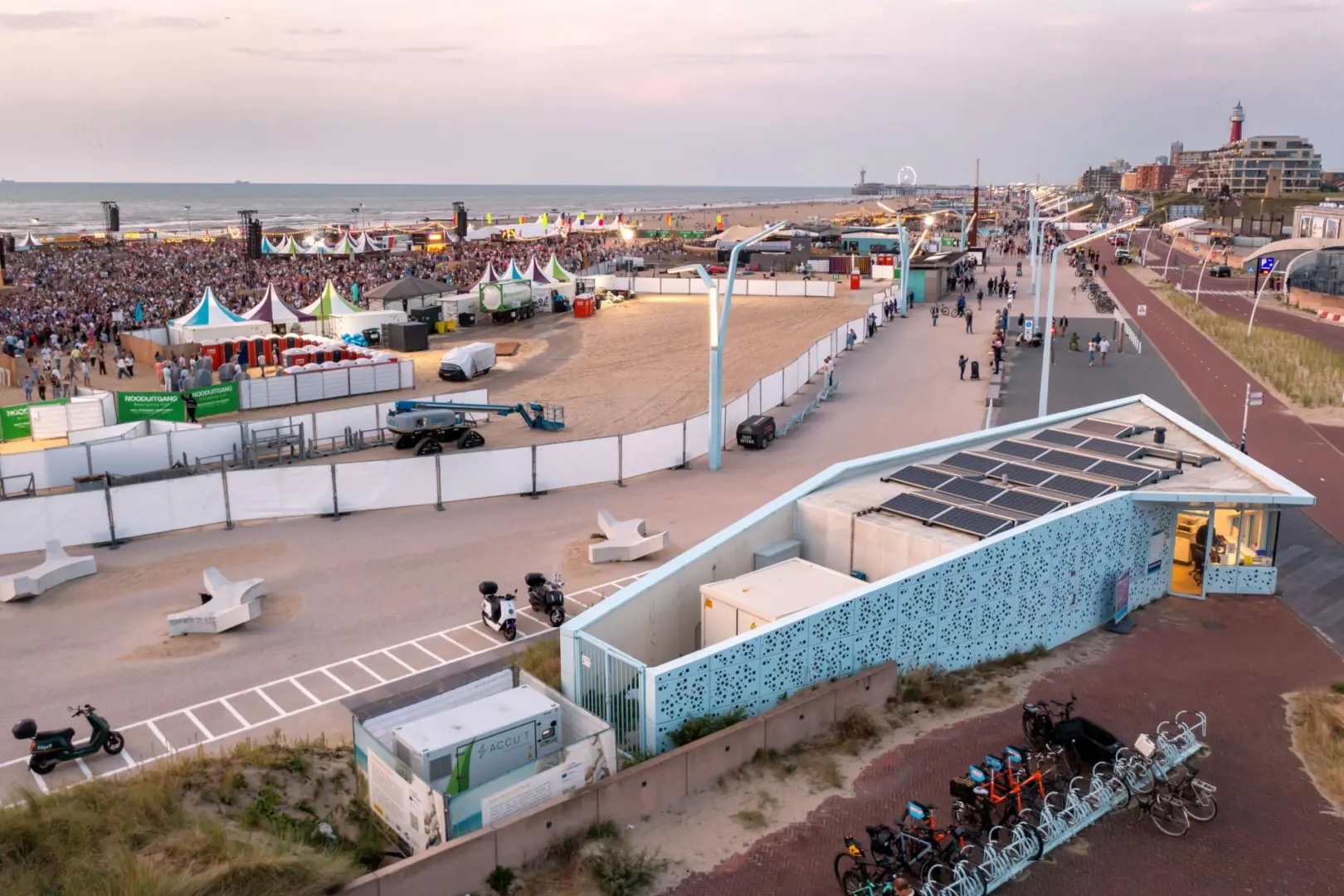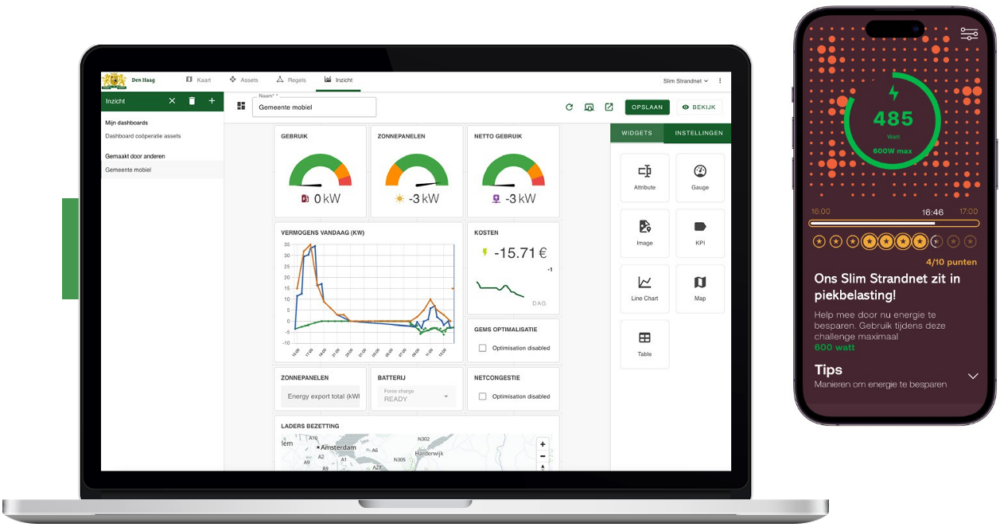Scheveningen Beach Net
Energy Management – City of The Hague & Stedin
The Challenge
The Smart Beach Net in The Hague is a privately owned network by an energy cooperation consisting of The City of The Hague and multiple beach pavilions. As Stedin, the regional network operator (DSO) is facing net congestion challenges, the cooperation is offering it’s flexibility of both shared and individual charging, battery, heating and solar assets, to help resolving congestion. The challenge is to design and implement a democratic, reliable, and distributed solution which allows participation by all individuals. It requires a transparent and open solution which is managed by the cooperation and warrants the best possible contracts both with energy provider as well as the network operator.


Households and districts
The members of the cooperation collectively manage shared assets, a district battery and a shared solar field. In addition they are individually optimising their own energy consumption. In the end each individual is seeking a reliable supply of electricity at a reasonable price. As cooperation they have a shared energy provider offering dynamic tariffs and are considering a dynamic capacity based contract. With the installed energy management system they want to use electricity when it is at the lowest cost, not pay for creating any unbalance (costs) and following the dynamic requests related to the dynamic capacity based contract.
Optimisation and control
To manage optimisation towards lowest integral costs, the implemented EMS offers forecasting for renewable production as well as consumption. To handle different energy and congestion markets, a translation is made towards a dynamic tariff, being the sum of dynamic energy and grid tariffs. Available flexible loads, batteries, chargers and heaters are scheduled, within required comfort limits, targeting the lowest integral costs. To enable this, the solution uses standardised asset types, e.g. for solar, meters, batteries, chargers, heaters and EVs.


Flexibility trading
There are multiple dynamic factors influencing the integral costs for individual energy cooperation members. For energy there are day ahead dynamic tariffs, imbalance fines and intraday trading preventing imbalance (e.g. FRR/FCR). For congestion there are, for example, dynamic capacity based contracts as well as intraday redispatch bidding. The implemented solution intends to translate these types of contracts, in a generic way towards EMS implementations, using dynamic tariff models with estimated price elasticity, as well as placing temporary restrictions on maximum power import values for different meters. Energy sharing means applying an additional dynamic internal tariff, depending on the sign of the effective direction of energy flow: consuming or feeding in.
Connect districts and homes
Within this case the EMS is connecting the shared assets: solar, charging and a battery. In addition individual EMSs are installed as HEMS in each of the connected beach pavilions and the harbour buildings, connecting individual assets. Individual pavilions voluntary decide to participate in the different markets, setting their personal comfort ranges. All of course according to the energy cooperation agreements. The optimisation runs both on individual HEMS installations as well as on the district level in the EMS, using dynamic internal tariffs.

Energy Management

Energy management necessitates the monitoring of energy generation, consumption, and short-term storage systems, as well as controlling them to achieve maximum financial benefits or carbon savings.
OpenRemote facilitates the connection of energy systems and the execution of forecast and optimisation routines, considering predefined targets, network modes, and capabilities of the connected assets.
We provide a customisable dashboard for energy managers and mobile applications for on-site staff, all designed to meet your specific optimization and reporting requirements, hosted within your secure environment.













